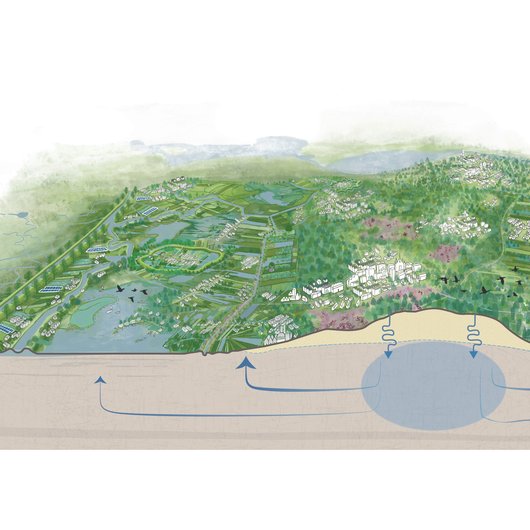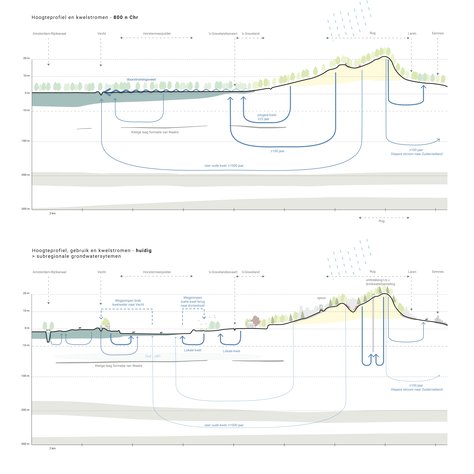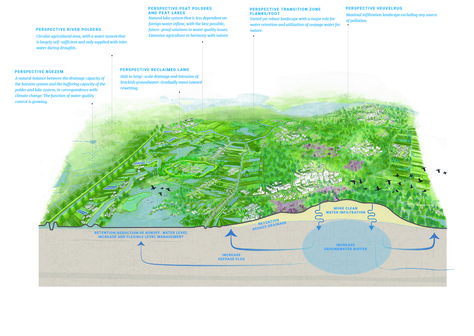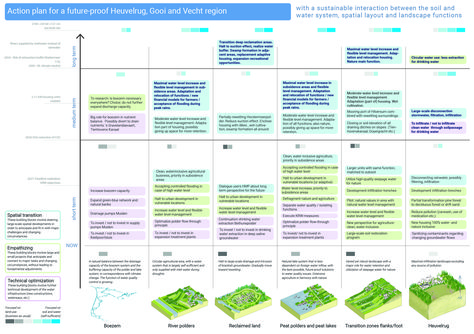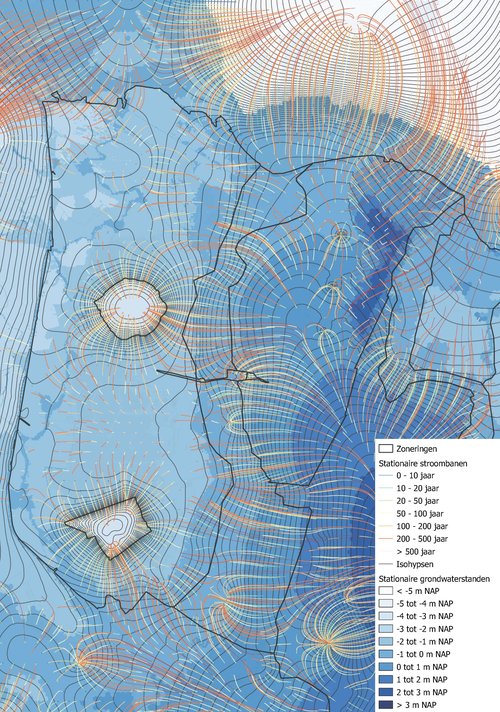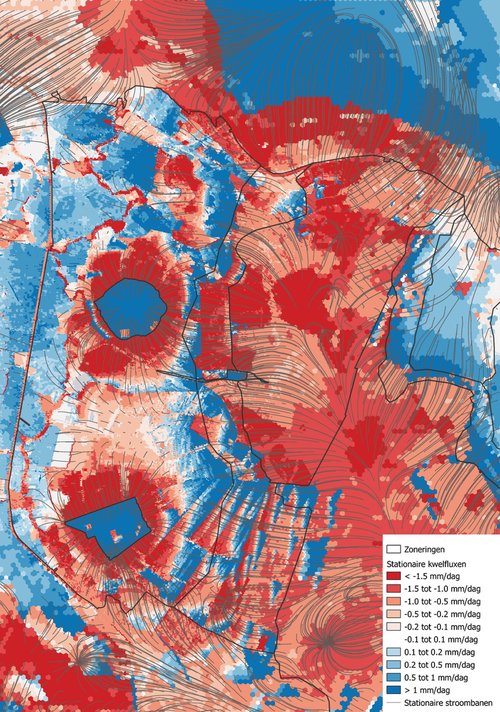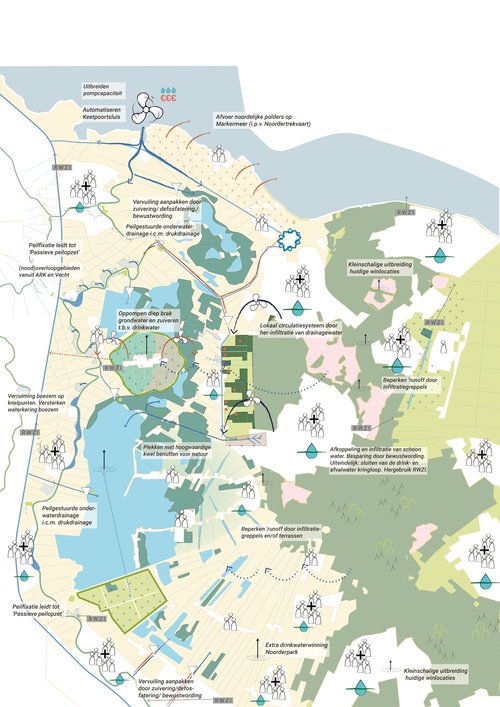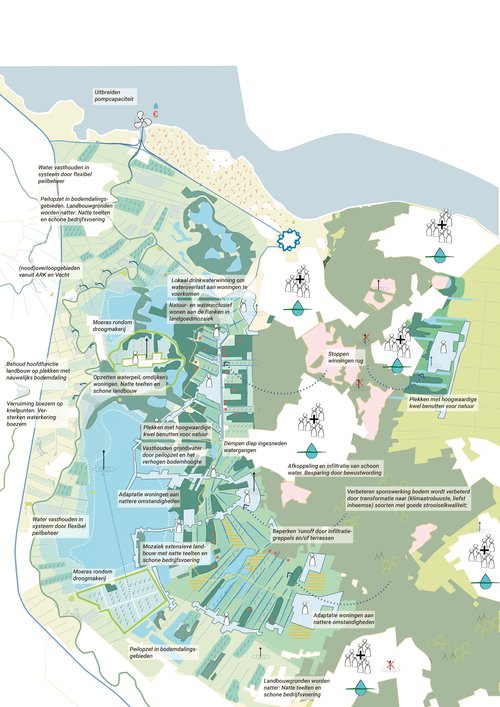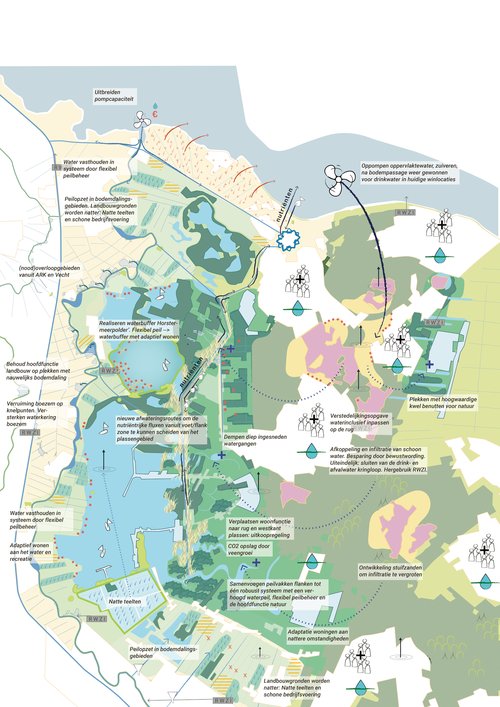SCOPE
Due to the combination of adaptations in the landscape from a social engineering viewpoint, climate change, subsidence and urbanization, the water and soil system in the area have reached their limits. Land use and the associated spatial layout do often not correspond to the subterranean structure and the natural water system. As a result, major problems in water quantity and water quality occur that affect nature, agriculture, urban functions and drinking water supply. H+N+S Landscape Architects and HydroLogic were asked to give an insight into the current water and soil system and its interaction with the spatial layout and functions of the Heuvelrug, Gooi and Vecht region and to provide an action plan for a sustainable future.
